Search engine optimization helps you rank better on search engines like Google, Yahoo, and Bing.
But do you know that it can also help you rank higher on social media platforms like Instagram?
Yes! With the right Instagram SEO techniques, your profile can appear higher in the app’s search results.
And because Instagram now allows users to search for keywords directly on the app, optimizing your profile and posting for Insta Search will help you grow your reach and move ahead of the competition.
In this article, we will discuss Instagram SEO, the best tool for Instagram keyword research and hashtag generator, and important tips that will help you rank higher in the feed.
What Is Instagram SEO?
Instagram SEO is the process of optimizing your profile and content in such a way that they appear higher in the search results.
Doing so will help you increase your reach and drive more visitors and conversions to your Insta account.
It is very important because you can’t convert visitors into customers if they can’t find you.
You see, when someone uses the Instagram search tool to look up words that are related to your business, you want your content or account to appear on the top of this list.
Instagram SEO tactics help you achieve just that.
Let’s understand this with the help of an example. Type “baking” in the search box, and you’ll find this:
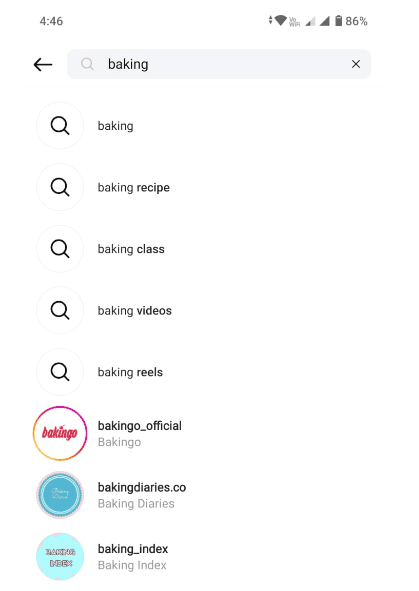
Selecting “baking recipe” brings you to this page:
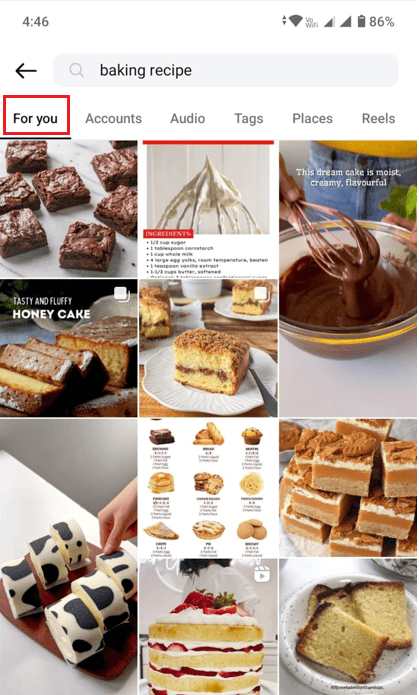
This is an Instagram For You Page.
It is an algorithm-driven feed that shows personalized content to users based on preferences, interests, and previous engagement on this platform.
For our example, this shows the most relevant content for our search query, “baking recipe.”
You can see there are other options next to the For You Page, like accounts, audio, tags, places, and reels.
All these search result pages will show the top-ranking content for our search term (baking recipe).
When you move to the account section, you’ll find the top-ranking accounts for baking recipes:

If you visit this top-ranking account, you’ll see that it belongs to a home baker who shares her baking recipes on Instagram. Check out her bio:
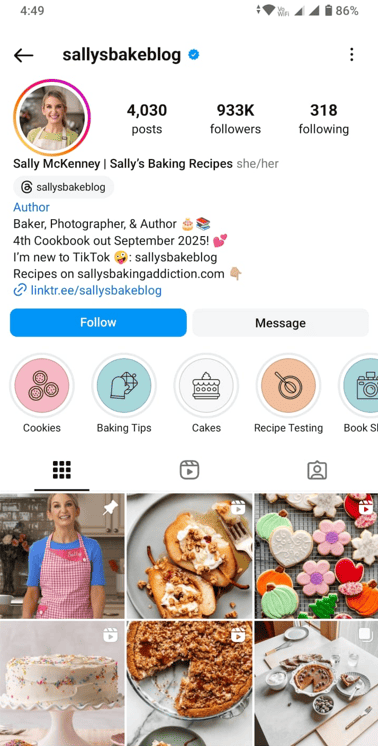
Rather than buying an ad, this baker made us aware of her personal brand by simply optimizing her content for: “baking recipes.”
She did this because she knew that users who look for this keyword are likely to be interested in her baking recipes.
That’s how Instagram SEO works. You give users what they want, and in return, you get better visibility and more conversions.
Why Is Instagram SEO So Important?
With over 2 billion monthly active users, SEO plays an important role in both discovery and brand reach on the platform.
See it like this: Every time someone types a word that’s related to your business, you have the opportunity to make a positive impression and drive high-quality traffic to your Instagram profile (and to your website as well).
Instagram SEO lets you engage prospective customers who are more likely to convert than others.
But there’s one question that’s on everyone’s mind: Do people actually use Instagram to buy products and search for businesses?
Is it worth putting all our efforts into optimizing our content to appear higher in search results?
Yes, and yes.
Instagram reports that over 200 million business accounts are visited by users daily.
What’s more, about 50% of people use this platform to look for new brands, products, and services.
Some 40% of users also shop for products on this platform every week using tags and the Shop feature.
So, it’s clear that if you want to reach a relevant audience that’s seeking out products and services like yours, Instagram SEO is the strategy for you.
What Are The Ranking Factors For Instagram SEO?
Instagram doesn’t have one algorithm. Instead, it uses a set of algorithms, processes, and classifiers — each with its own purpose.
Every single part of the app — feed, reels, stories — uses its own algorithm, which is tailored to how people use it.
The platform ranks things differently in separate parts of the app based on how people use it.
There are three specific ranking factors for Instagram SEO that you should keep in mind.
These factors help the search bots understand what content to deliver when someone performs a search on the app.
1. Search Text
As the name says, the search text is the text user types in the search bar. It is the most important ranking factor on Instagram.
The search function is the main way to find content on the app. When someone looks up a specific term, Instagram recommends phrases to get users started.
For example, if you type “fashion style” in the search box, this is what you’ll see:
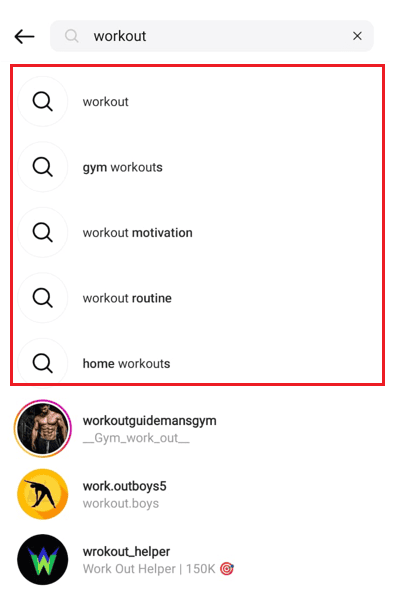
Based on the search term, Instagram will recommend relevant phrases, accounts, places, reels, hashtags, and audio — all of which match the search intent.
Hashtags used to dominate Instagram search, but now it’s found that keyword-rich captions offer 30% more reach than hashtags.
But that doesn’t mean you should ignore them. A consistent hashtag strategy is still the most effective way to grow on Instagram.
2. User Activity
User activity is another crucial ranking factor for Instagram SEO. This includes all those accounts and hashtags that users followed and interacted with in the past.
It also includes the posts users have viewed recently, even from accounts they don’t follow.
Suppose you’ve watched a lot of food related content on the app, it will recommend you posts and reels from chefs or restaurants.
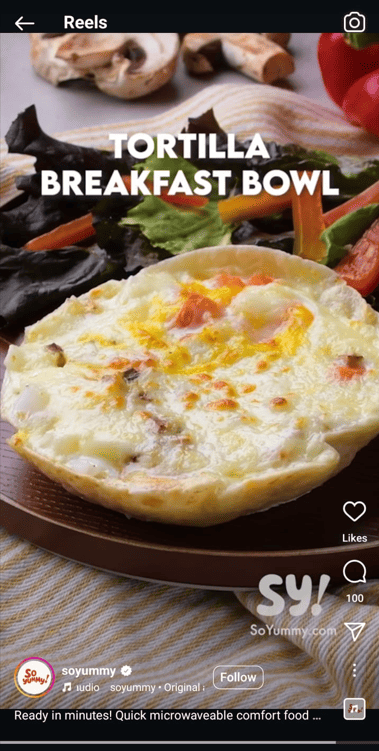
The app also determines the link between viewers and creators. If someone has commented on your post or interacted with your reel, Instagram will probably recommend your content on their feed.
Mutual connections also play a big role in Instagram SEO.
If someone follows your account on Instagram and their friend searches for a term that is related to your business, your account will rank higher in the search results.
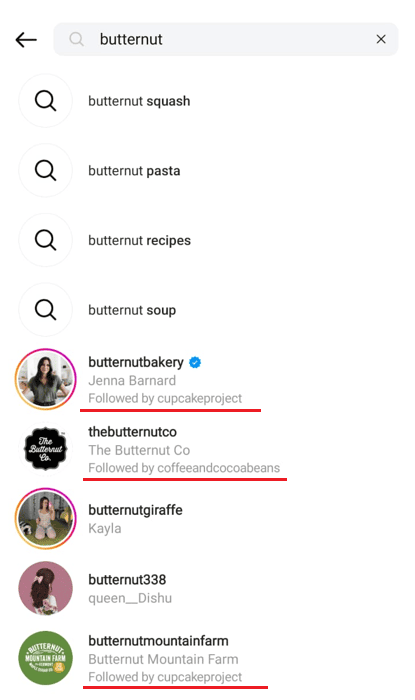
This way, you can make it easier for your target audience to find you.
3. Popularity Signal
Content that is already popular on Instagram will rank higher in the search results. The more popular a post or account is, the more likely it will appear on your feed.
This is because Instagram SEO ranks content that is popular on the app. This popularity is measured in terms of likes, shares, clicks, and follows.
For example, this post of Lionel Messi lifting the World Cup trophy was everywhere in 2022:

You can see the number of likes on this post. One big reason behind this post’s popularity is the person who posted it. Same goes for Taylor Swift’s engagement post in August 2025.
Instagram also considers information about the person posting the content.
A person who has had a lot of interaction (followers, likes, shares, etc) over the past few weeks will likely rank higher than someone new to the platform.
Though popularity signals are important, they have more impact on the Explore and Reels page.
The home page is usually dominated by individual preferences.
How Can You Rank Higher On Instagram?
Optimizing your content for ranking higher on search results is a difficult task, but it’s not impossible. There are certain things to keep in mind when you’re optimizing your Instagram profile.
You can optimize your Instagram profile by adding relevant keywords, using hashtags smartly, keeping an account of current trends, posting at the right times, and creating engaging content to encourage interaction to improve your account’s ranking.
Let’s discuss each of these points below to see how they can boost your visibility.
1. Optimize Your Profile With Keywords
Every time someone searches for a keyword that’s related to your business, you have the option to bring a prospective customer to your profile.
That means you need to add keywords that are relevant to your niche and place them in the right places.
According to Instagram’s CEO (that’s Adam Mosseri), when the site is indexing content, it considers four main things to make sense of your profile: your handle, profile name, bio, and captions.
These are the main spots where you want to put keywords that are relevant to your business and audience.
Your handle can be your brand name, but you can add the target keyword in your profile name and bio.
For example, if you run a digital marketing agency, your handle can be “ABC Marketing Solutions,” but your profile name and bio should include “Digital Marketing Agency.”
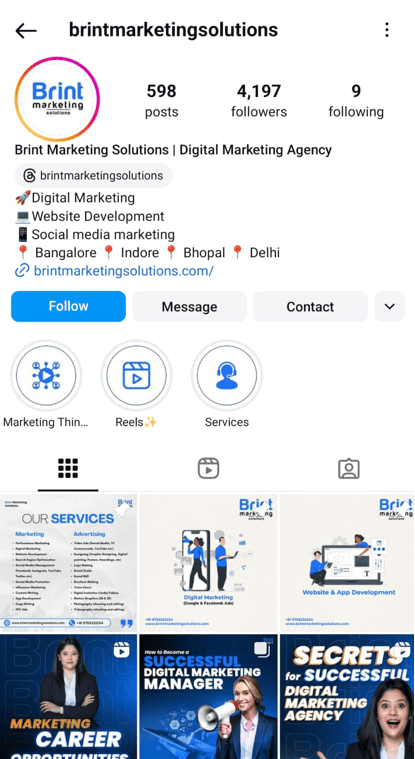
Another important thing to keep in mind is location tags.
If you run a small business that targets an audience of a specific region (take New York, for example), make sure to mention this location in your bio.
But keep in mind that only business accounts can add location tags to Instagram.
You should also include relevant keywords in your captions. First, see what search terms people use to find content like yours, then add them in your captions.
The easiest way to find keywords is by using the search bar. Simply type the main keyword in the search box, and you’ll see some suggested keyword phrases.
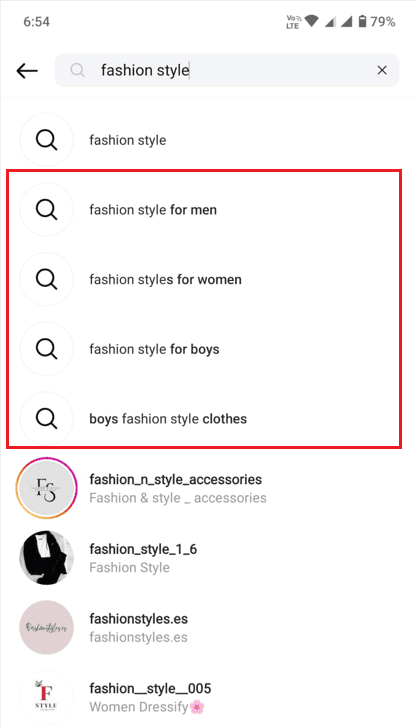
Save all these relevant phrases in your existing keyword list. You can add them whenever you feel like your content matches the keyword intent.
2. Use Hashtags Smartly
Hashtags allow you to boost visibility on the platform. When you create a new account, it can be hard to stand out among the vast number of accounts and posts on Instagram.
But hashtags can help you reach even those accounts who don’t follow you yet.
How? You see, the Instagram search bar allows users to search for posts by hashtags.
For example, if someone wants to find home decor ideas on the platform, they can simply type #homedecor in the search bar, and a list of relevant content will appear on their For You page.

All these accounts have used the same hashtag (#homedecor) in their posts, which is why they’re visible when a user searches for this hashtag.
As a business owner, your goal should be to add as many relevant hashtags as you can so you’re also ranking higher when a user is looking for a business like yours.
There are two ways to add hashtags in your post: Include them directly in your captions or add them in comments.
You can also use a branded hashtag for your business. For example, Apple created the #ShotOniPhone campaign, which helped them collect user-generated content (UGC).
Now, one question you should be asking yourself is: Which hashtags should I use?
There are so many hashtags available for a keyword that users often get confused about which one they should add and leave.
To put it simply, you must include hashtags that have a high search volume, are related to your content, answer the search intent, and are present in your competitor’s posts.
This is where the Keywords Everywhere Hashtag Generator comes in.
Using this tool, you can generate and analyze all relevant hashtags for your account that will help Instagram’s algorithm understand your content and make it more discoverable for users.
Here’s how you can use this tool:
Turn on the Keywords Everywhere extension and go to your profile. You’ll see two options on the left-hand pane: Generate Hashtags and Hashtag metrics.
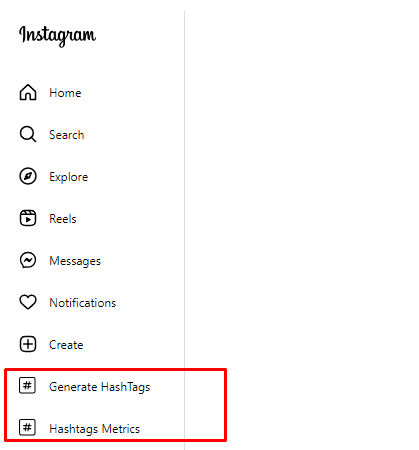
Select the “Generate Hashtags” option. You’ll be directed to the next page, where you have to enter the keyword for which you want to find hashtags.
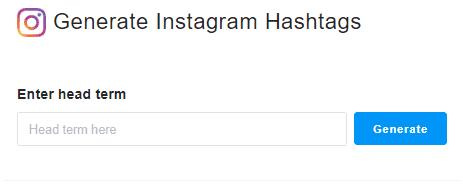
Head term here is the main keyword you want to focus on. For our example, we’ll assume that you want to create a post about “home decor.”
After writing this head term, we’ll click “Generate” and Keywords Everywhere will give a detailed table with all the hashtags people are using to create or find content around this head term.
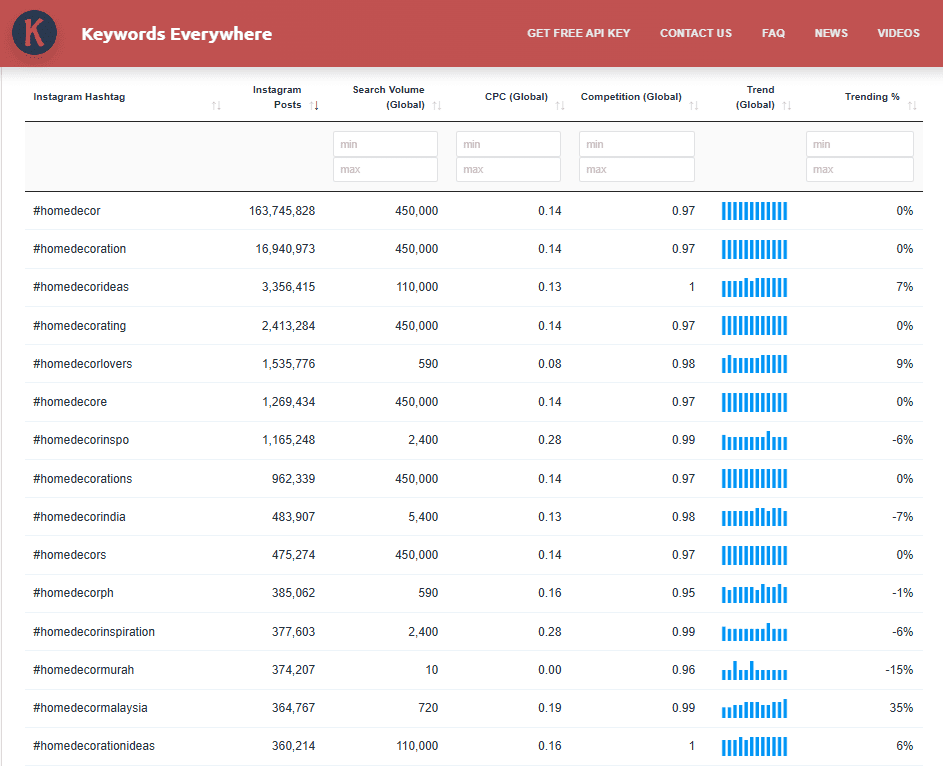
Some head terms have hundreds, if not thousands, of associated hashtags. You can’t possibly use all of them in your content strategy.
Keywords Everywhere allows you to filter the results in the table.

For example, you can set a minimum and maximum limit for search volume to see only the hashtags that meet your desired criteria.
You don’t have to keep searching for head terms repeatedly to see results. Instead, you can download the results table in CSV, Excel, or PDF format for future analysis.
You can also print the table directly from Keywords Everywhere.
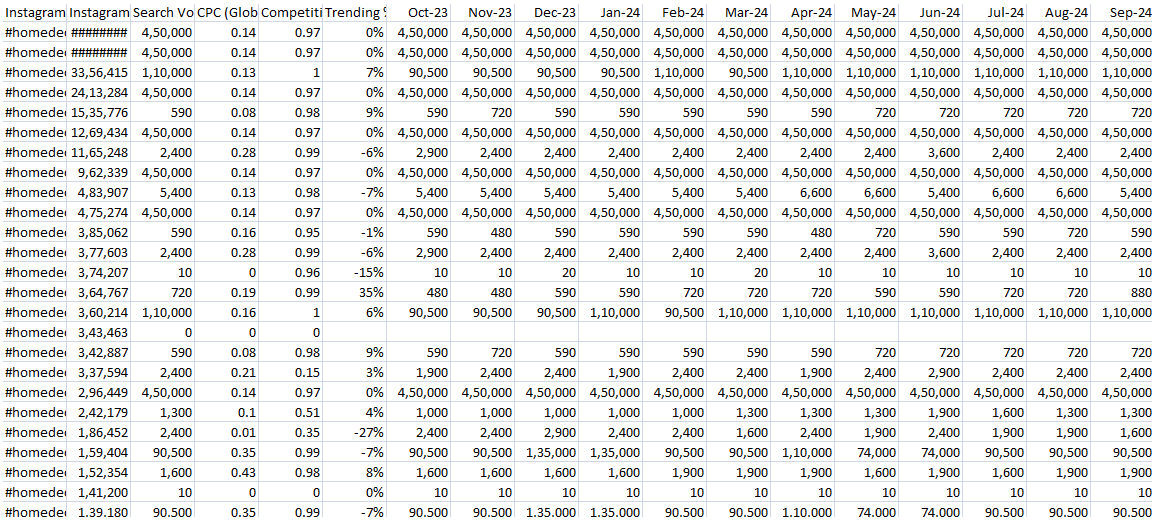
You can read our complete guide on how to use Keywords Everywhere Instagram Hashtag generator, where you’ll learn about the tool.
While hashtags will not make a huge impact on your reach, they’re still important to use.
According to experts, there are certain things you should keep in mind when it comes to using hashtags for Instagram SEO:
- Only add 3-5 relevant hashtags in your post, as more will look spammy and won’t affect your reach.
- Use only those hashtags that are relevant to your content and target audience.
- Always include them in your captions, not comments.
- Mix well-known and niche-related hashtags to broaden your discoverability.
If you stick to the recommended 3-5 hashtags, you’ll determine which ones are consistently driving traffic over time.
You also have the option to use the social listing to find what hashtags your target audience, competitors, and influencers in your industry are using.
3. Optimize Alt Text for Accessibility and SEO
The alt text describes your content to users with visual impairments and also helps Instagram’s SEO bots understand your content.
Instagram uses object recognition technology to generate an automatic description for each photo for those using a screen reader.
This information also informs the Instagram algorithm and search results about your photo’s content.
However, Instagram’s auto-generated alt text won’t be as detailed as text created by a human.
So it’s better to write the alt text yourself. Once you’ve added an image on Instagram, you’ll be brought to the caption screen. Look at the bottom, and you’ll find “More options.”
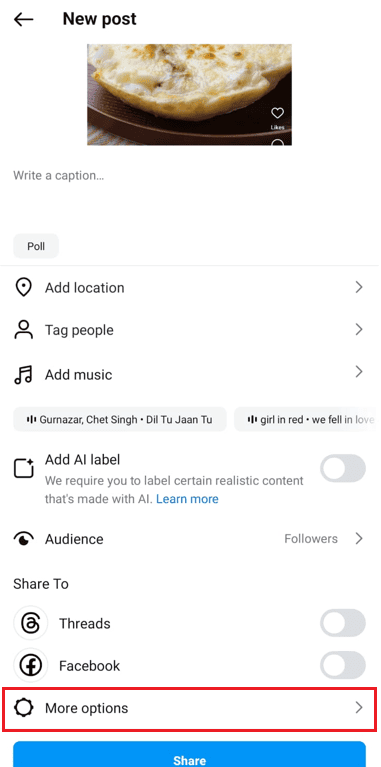
After that, you’ll be directed to the “Advanced settings” page. You’ll see the “write alt text” option at the bottom of the screen, where you can insert the alt text for your image.

To add alt text to a photo you’ve already posted, follow these steps:
- Select the image in your grid that you’d like to add alt text to.
- Tap the three dots in the top right corner of the image, then select Edit.
- On the Edit screen, choose Edit Alt Text in the bottom left corner.
- Here, you can add custom alt text that describes your image. Include keywords if they fit naturally, but remember: the purpose of alt text is to clarify the image, and Instagram may penalize you for keyword stuffing.
Not only does adding alt text make your posts more accessible, but it also enhances your Instagram SEO.
4. Encourage User-Generated Content (UGC)
User-generated content (UGC or consumer-generated content) is any type of content (text, videos, images, reviews) that is created by users instead of brands.
It is shared by social media users on social media platforms or other channels, like landing pages, email, or checkout pages.
When people who follow or buy from you share pictures or reviews about your products on Instagram, it acts as free advertising for your brand.
Nowadays, with so many people selling the same type of products and services on Instagram, brands have to fight to be seen online.
But no other content type is as powerful as UGC from your customers.
In fact, 86% of consumers are more likely to trust a brand that shares UGC compared to just 12% who are likely to purchase a product promoted by influencers.
This is why you have to encourage your followers or customers to share their reviews, images, videos, or posts about your brand on Instagram.
Look at how lululemon (a Canadian athleisure brand) encouraged their followers and customers to post photos of themselves in lululemon clothing with the hashtag #thesweatlife.
This strategy gave lululemon a large amount of user-generated content to use and helped spread brand awareness as they shared posts from brand ambassadors.
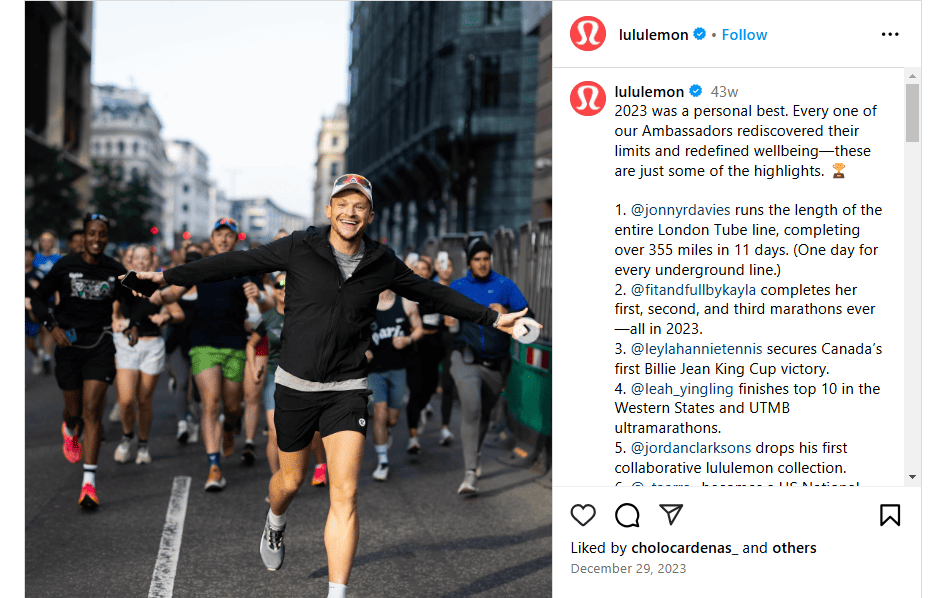
You can use the Keywords Everywhere Hashtag generator to create similar hashtags to gather UGC on your social media channels.
However, simply sharing user-generated content is not enough for Instagram SEO. You should also keep these points in mind:
- Always ask for consent before sharing your customer’s content.
- When sharing the content on your Instagram handle, do not forget to give credit to the original creator. You can tag them directly in the posts or mention them in pictures or comments.
- Be clear about the kind of content you want UGC creators to make. They want you to share their posts on your business account so they’ll be open to suggestions from your end.
- Review your social media strategy and see how UGC fits with your marketing goals. Then, write a simple statement that explains the type of content you’re most likely to feature.
- Once you have a clear UGC request, share it anywhere your audience interacts with your brand.
5. Use Instagram Stories Highlights Effectively
Quick questions: Are you struggling to capture and keep your audience’s attention?
If so, Instagram Stories could be just the solution!
With short attention spans and a demand for quick updates, reaching your audience can be tough. But Instagram Stories helps by letting you share quick, engaging content in an immersive way.
There’s one catch: Instagram Stories disappear after 24 hours.
That’s where Instagram Highlights come in. They allow you to keep your best Stories on your profile for longer.
Instagram Stories Highlights are basically collections of Instagram Stories that are saved and pinned to your profile.
Since 500 million users are active on Instagram Stories daily, turning them into highlights will give you more visibility and engagement and will also enhance your Instagram SEO.
Let’s see how you can add highlights on Instagram for SEO.
First, you need to go to your active story and at the bottom you’ll find the highlight option. Click on it.
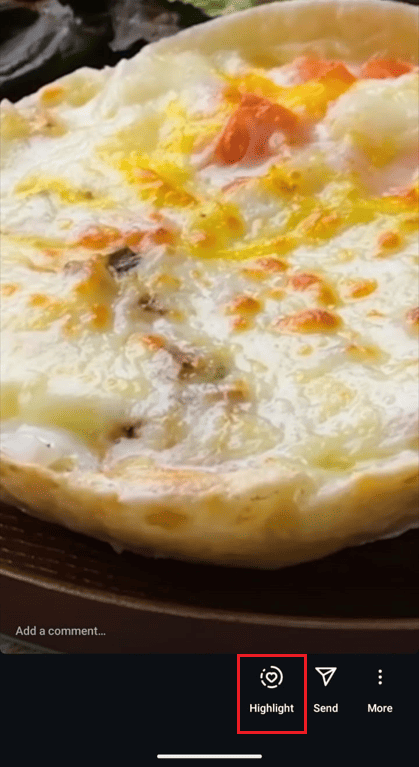
If you have created a highlight in the past, you can add your story to the most relevant highlight title. If not, just select the “+” icon and create a new highlight.

Give a relevant title to your highlight and end the process by clicking on the “Add” button.
And it’s done! By adding highlights regularly to your account, you can keep your followers engaged and informed about your events, promotions, products, or services.
6. Post Consistently And At Optimal Times
Audience interaction is a major ranking factor on Instagram. Posting content when your customers are most active increases your organic reach and engagement.
According to SocialPilot, these are the best times to post on Instagram:
- Monday: 11 am and 1 am
- Tuesday: 11 am and 1 am
- Wednesday: 9 am, 2 pm, and 6 pm
- Thursday: 7 am, 2 pm, and 9 pm
- Friday: 7 am, 12 pm to 1 pm, and 8 pm to 9 pm
- Saturday: 12 pm to 3 pm
- Sunday: 1 pm to 5 pm
According to Instagram’s CEO, posting two feed posts per week and two stories per day is ideal for growing a following. However, you may find different frequencies that work best for your audience.
Consistently sharing valuable content at the right times is essential for effective Instagram management.
Conclusion
Remember that you can’t boost SEO for Instagram overnight. It takes a lot of planning to increase your brand reach and engagement on Instagram.
But with tools like Keywords Everywhere Hashtag Generator, it has now become possible to boost Instagram SEO by using relevant Instagram keywords and hashtags.
It gives you all the important metrics about Instagram hashtags, including search volume, competition, in-depth analysis, and more.
If you already have an active hashtag campaign, you can use Keywords Everywhere to analyze its metrics and see if you’re targeting the right terms.
Instagram keeps on updating its algorithm, but the platform is upfront about updates.
Follow our Instagram SEO best practices and be consistent on the platform. Using the right hashtags and captions in your content will make it easier for users to find you.
And this will, in turn, boost your visibility and brand reach.


